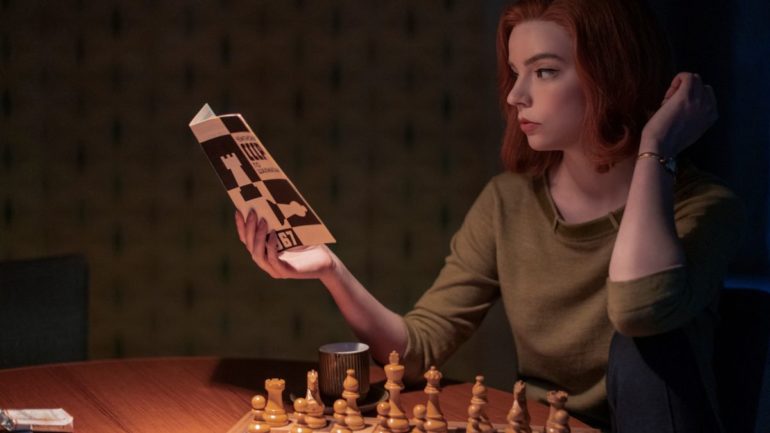You don’t need to know chess in order to enjoy The Queen’s Gambit on Netflix – but it surely can’t hurt. In episode 1, we see how protagonist Beth Harmon (played by Anya Taylor-Joy) has the ability to visualize the chess board on the ceiling of her orphanage’s bedroom, paving the way for her journey to becoming a (troubled) chess prodigy.
Every time someone mentions a famous chess maneuver in The Queen’s Gambit, I stare blankly at the screen and vaguely, stupidly wish Beth was playing Tetris instead.
Nonetheless, that hasn’t mattered – The Queen’s Gambit doesn’t fudge its chess scenes, and you can figure that out even if you don’t understand what’s going on. The series starts with a fundamental respect for the game, the numerous strategies it takes to win at a high level, and the smart people who try to master it.
It’s also a genuinely great TV drama, the likes of which I don’t think Netflix has put out that much this year. Beth’s journey in the show from pill-addicted orphan to chess champion is like so many implausible rags-to-riches stories – but even if many beats of that tale feel familiar, there’s something specific about this show’s approach to characterization that extends its appeal. It’s a combination of perfect casting, great writing and Mad Men-level period detail.
You should absolutely check The Queen’s Gambit out – and you might need to be patient, because the first episode is a little slow.
Black and white
The show doesn’t even have that much in its arsenal to create real drama, really – so much of each episode asks the same question: ‘can Beth win this chess game?’ But it makes each match matter by digging into who each of her opponents are, and how Beth develops a competitive relationship with them, which heightens the drama.
Sometimes you get broader insights into who she’s playing against, which tells you just enough of a story to make you invested in their paths crossing – the Russian chess champion who’s being guarded by the KGB, for example, essentially to stop him escaping. Or the regional champion who has a bit too much pride invested in defeating a woman within a largely male-dominated chess scene.
Each opponent is so well-cast – I remember what all of them are like, and some end up running into Beth later in life, since the story of The Queen’s Gambit spans years.
Making the opponents matter is a really important distinction of The Queen’s Gambit, though, because the show has to make you invested in watching a bunch of chess games back-to-back. Writer and director Scott Frank (who created Netflix’s acclaimed Western series, Godless) succeeds at this by making each encounter feel personal – not just to Beth, but in what playing chess means to her opponents.
The other, more important ingredient to the show’s dramatic chess encounters is Taylor-Joy herself. She’s cool and collected when she’s in control of the game – and apoplectic when she’s losing. The reason for that is obvious: the show’s core theme is that Beth feels in control when she’s playing chess, because most of her young life was spent experiencing traumatic events where she couldn’t affect the outcome.
It’s a brilliant performance – and the centerpiece of a really entertaining series, a surprise candidate for the year’s best.
Pleasingly, too, the show finds subtle and realistic ways to approach the fact that Beth is challenging a male-dominated scene without making the show entirely about that. The same goes for her unsustainable relationship with addiction in the series – The Queen’s Gambit avoids being hacky in exploring how dependency on drugs goes hand-in-hand with Beth’s lifestyle as a chess pro.
Add The Queen’s Gambit to your Watch List. You won’t believe chess can be this exciting.
The Queen’s Gambit is seven episodes long, and now streaming on Netflix.



